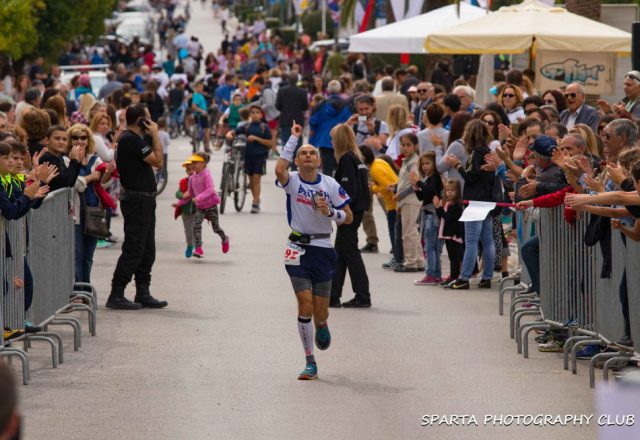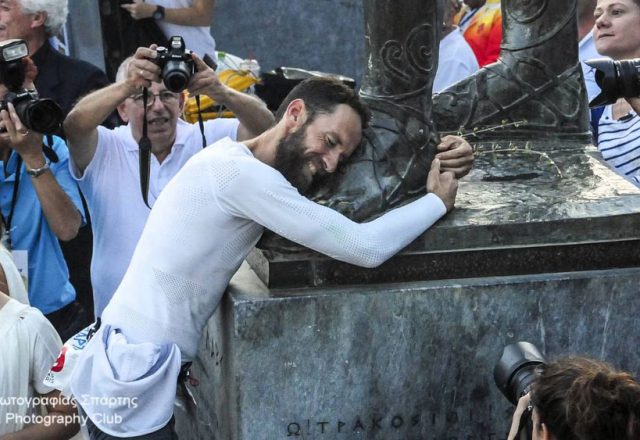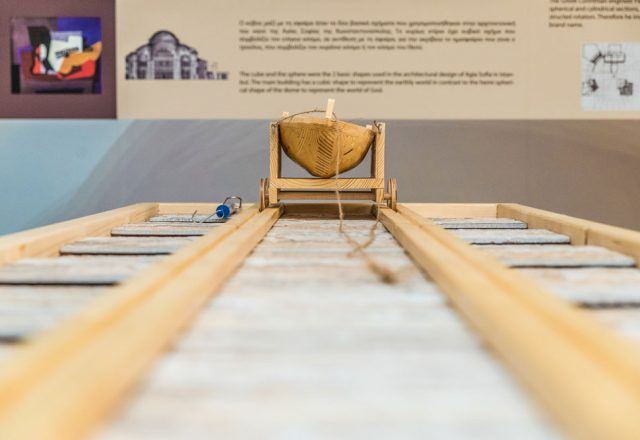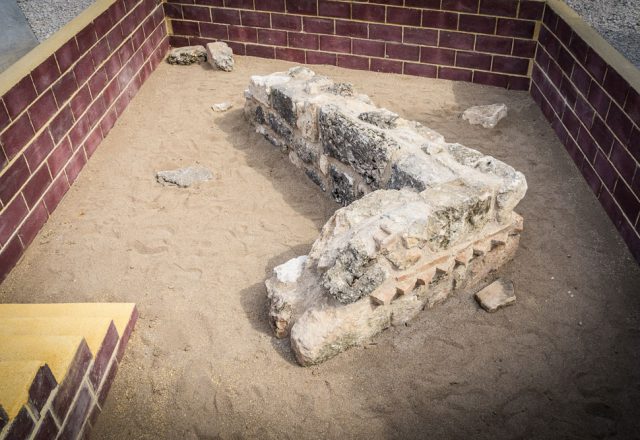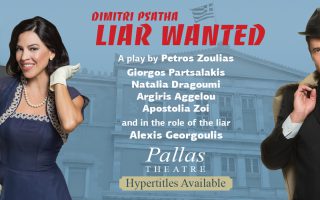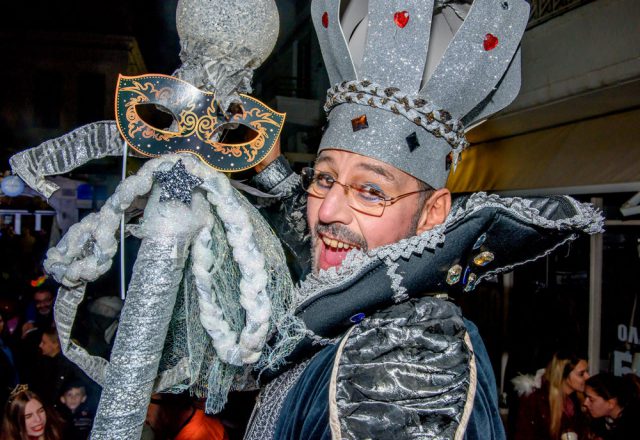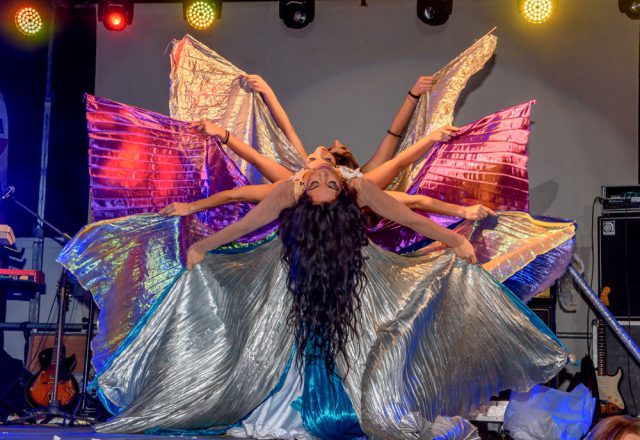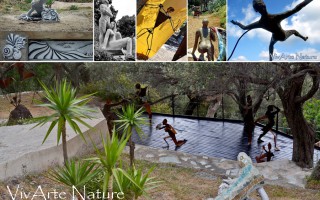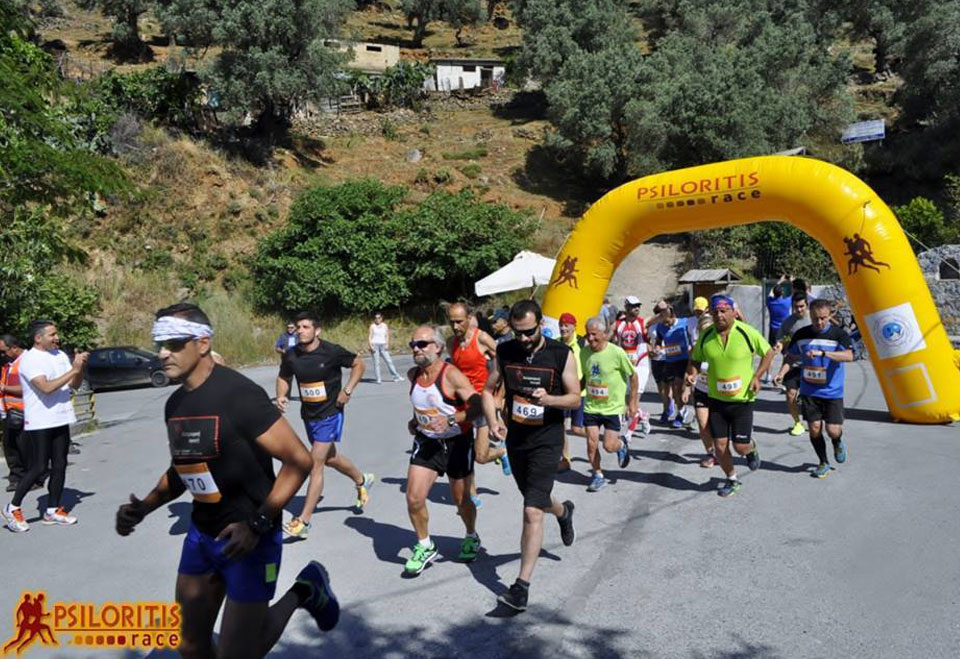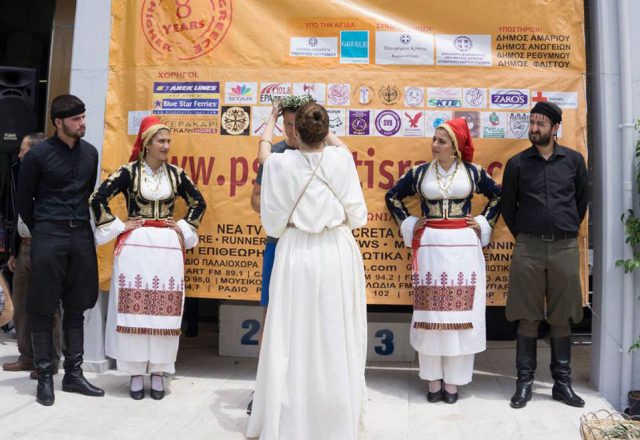 SPARTATHLON is a historic ultra-distance foot race that takes place in September of every year in Greece. It is one of the most difficult and satisfying ultra-distance races in the world because of its unique history and background.
SPARTATHLON is a historic ultra-distance foot race that takes place in September of every year in Greece. It is one of the most difficult and satisfying ultra-distance races in the world because of its unique history and background.
The Spartathlon revives the footsteps of Pheidippides, an ancient Athenian long distance runner, who in 490 BC, before the battle of Marathon, was sent to Sparta to seek help in the war between the Greeks and the Persians. According to the ancient Greek historian Herodotus, Pheidippides arrived in Sparta the day after his departure from Athens.
From 1984 the International Association “Spartathlon” was founded, which since then has continuously organized the race each September. The choice of this month is because that is the time reported by Herodotus for Pheidippides’ run to Sparta
1983 – Today
The battle of Marathon in 490 B.C. , one of the most famous battles in world history, constituted a landmark and a starting point in the history of civilization. The triumph of the genius of Miltiades and the self-denial of his soldiers made the hordes of Persians flee and rescued Athens and Hellenism from the utmost danger of subjugation to the barbarian invaders. The effects of the victory at Marathon continue to influence the present. It was the first victory against the planned domination of “Asianization” over Europe and an event with momentous significance. Because of this victory, Athens was able to achieve a great deal and bequeath the benefits of its knowledge, arts and virtue to mankind. Two and a half thousand years after that historical battle, a sports event, inseparably related to it, was born in Greece.
It’s Name was Spartathlon
It all started from Herodotus’ account of the Battle of Marathon. The great historian of antiquity described the details of the battle many years later and mentioned the deeds of Pheidippides, an Athenian messenger, sent by his generals to Sparta in order to secure help for the reinforcement of the scanty Athenian forces against the forthcoming Asiatic incursion. According to Herodotus, Pheidippides arrived in Sparta on the next day of his departure” from Athens.
An Epic Deed
Spartathlon is the event that brings this deed to attention today by drawing a legend out of the depths of history. The idea for its creation is belongs to John Foden, a British RAF Wing Commander. As a lover of Greece and student of ancient Greek history, Foden stopped his reading of Herodotus’ narration regarding Pheidippides, puzzled and wondering if a modern man could cover the distance from Athens to Sparta, i.e. 250 kms, within 36 hours. He thought that the only way to find out was to try to run the historical course since he himself was a long-distance runner. Thus, he and four other colleagues from the RAF came to Athens in the autumn of 1982 and planned the run as closely as possible to Herodotus’ description. On 8th October they started their adventure to see whether their speculations could be verified. On 9th October, the next day, John Foden arrived in Sparta in front of the statue of Leonidas having run for 36 hours. His colleague, John Scholten, had arrived half an hour earlier and finally, John McCarthy got to the finish line in less than 40 hours.
The British team proved Herodotus was right! A man is really able to cover 250 km in two days.
When John Foden and his colleagues first arrived in Athens, they were warmly welcomed and supported by members of the British community and Greek friends. After the success of the first attempt, the pioneer of this event began to envision the establishment of a foot race that would bring long distance runners from all over the world to Greece for a race following in the tracks of the ancient runner. The results are now widely known. Undoubtedly the historical context of the race, closely connected to the Olympic idea and consequently with compete unselfishness, appealed to the imagination and caused unprecedented excitement amongst a great number of long distance runners throughout the world. Their response was, justifiably, immediate and catalytic. The 1st International Spartathlon was organized in 1983 with the participation of 45 runners from 11 countries as well as Greece.
The success and participation were decisive for the future and the development of the race. Thus, in 1984, the “International Spartathlon Association” (I.S.A.) was created. Since then, the I.S.A. has organized the race every September as, according to Herodotus’ account, Pheidippides’ mission to Sparta was made at that time of the year. The revival of a page of ancient Greek history is established now as one of the most famous sporting events worldwide. Great runners come to Athens from Australia and Japan, Canada and the USA, including, of course, most European countries. All of them are attracted to the uniqueness and difficulty of the race as well as the modesty and respect of the athletic ideals imposed by a race known as “mythic”
In addition, beyond its athletic aspect, Spartathlon has become a powerful tribute from which real messages of friendship and peace can be sent to the peoples of the earth without political or racial discrimination. A tribute where Greece is also promoted crowned by its unparalleled hospitality and natural beauties. Thus hundreds of runners who have participated in Spartathlon carry home their images and experiences from Greece, and are our best ambassadors abroad.
About the Race
Described as the world’s most grueling race, the Spartathlon runs over rough tracks and muddy paths (often it rains during the race), crosses vineyards and olive groves, climbs steep hillsides and, most challenging of all, takes the runners on the 1,200 meter ascent and descent of Mount Parthenio in the dead of night. This is the mountain, covered with rocks and bushes, on which it is said Pheidippides met the god Pan. In 2,500 years man has had no impact at all. There is still no pathway over the mountain that is swept by strong winds with temperatures as low as 4°C. The ascent is marked out by a trail of battery-driven colored flashing lights and its challenge is a trial for human stamina and mental strength. Over the mountain the last sections are no less energy sapping and exhausting for the runners as they follow a road that winds up and down hills before descending into Sparta. Even the finest athletes start hallucinating as they cover these final stages.
Having lost all sense of time and reality, they are “on automatic” as they push their weary bodies on towards the finishing line at the statue of Leonidas. At most, only about a third of the runners who leave Athens end the course in Sparta. The goal of all participants is to cover the course within the 36-hour time limit. Setting records is the primary aim. Those who succeed in reaching Sparta have trouble finding words to describe their feelings. Spartathlon has to be lived through. It is a very personal experience in which the athletes dream about participating. Their imagination is stirred by the idea of being a modern Pheidippides, running in the footsteps of the ancient messenger. They train for years to get fit enough both physically and mentally to meet the race’s demands.
Source: www.spartathlon.gr
The Centre of History and Science “GRAMMI.org” is a new initiative that aims at turning, through its activities, the visit to Corinth to an unforgettable experience.
The Centre’s aim is to offer opportunities to visitors to experience, in an innovative, exciting, and interactive way, the importance of Corinth’s history and the scientific and technological achievements connected with it.
With the lead of history the scientific achievements are unfolded as they were developed in Corinthia.
The 6km Project
From the ancient diolkos … to the Corinth Canal
Ηistory & Science Route
Αuthentic Experiences connecting ancient diolkos to Corinth Canal
Ancient diolkos
Hexamilion Wall
Construction of the Corinth Canal
- The program concerns groups of 10-50 people and is offered in both Greek and
English, as well as other languages with the help of specialized translators. - Τhe timing of the program can be tailored to the time available for each group (45’÷90΄)
Discovering the “GRAMMI.org”
Through a timeline and an exciting journey to the past with the use of rich and scientifically valid material:
• photos
• texts
• video animation
the centre brings the visitor in contact with the ancient diolkos, the Hexamilion Wall, and the attempts of digging a canal through the isthmus, as well as with the sciences involved (mechanics, geology, physics, mathematics, philosophy).
Science & Technology
are used in an exciting way to connect the theoretical knowledge with the technical characteristics of one of the most important constructions worldwide.
3D experience …
Virtual flying through the Corinthian and the Saronic Gulfs, the ancient port of Lechaion, and the archaeological site at Isthmia.
Sandbox application …
Real time water flow simulation for the construction of Corinth Canal.
Physics experiments …
Moreover, through easy, pleasant, though enlightening, Physics experiments, visitors will be able to realise the extraordinary importance of the ancient diolkos – this pioneering technological achievement of the ancient Corinthians – for commercial and military purposes.
Visiting the permanent exhibition ‘Shipbuilding in ancient Greece’
Visitors will be able to see the wooden models of Greek ships from antiquity to modern times, some of which are closely connected with Corinth:
• the trireme
• the Athenian bireme
• Samaina
• the Byzantine dromon
are some of these models of this unique collection, handmade with every possible detail, copies of the original ships that get the visitors to a fascinating journey to Greek naval history.
Workshop of the ancient Corinthian doll (plagona)
Ancient Greeks possessed a great tradition of creating small terracotta figurines either for religious purposes or as toys.
The workshop is carried with the guidance of the director of theatrical and puppetry activities of our Centre.
The participants are either adults or children or entire families.
Source: www.grammi.org
Agia Eirini beach lies between the villages Elata and Mesta in the southwest side of the island, six kilometres from the port of Mesta. It is a calm, quiet beach, with thin sand surrounded by heavy greenery. A small shelter for local fishermen has been built in the bay.
The small church of Agia Eirini is also there, and on the saint’s name day, May 5th, a traditional festival takes place in the village.
Opposite the beach the small islet lies the small islet of Agios Stefanos. Every year, on August 2nd, the people of Elata hold a festival in the islet. They cross over in boats and spend the night there.
If you choose Agia Eirini for your swim, you can have lunch or dinner in the only tavern there, which is open from May until the end of summer.
Information
| Access by road: Yes | Amenities: |
| Access by bus: No | Accessible for people with special needs: No |
| Acess on foot: : No | Beach type: Sand |
| Lifeguard: No | Natural shade: Yes |
| Depth: Normal | Sea activities: No |
| Offroad: No | Near restaurant: No |
Source: Chios Travel Guide
Another beautiful beach near Olympoi village is the bay of Agia Dynami or Agia Theodosia. The waters have a unique emerald colour and incredible clarity.
It is a secluded beach, mostly. Swimming there is a unique experience.
Information
| Access by road: Yes | Amenities: |
| Access by bus: No | Accessible for people with special needs: No |
| Acess on foot: : No | Beach type: Small pebbles and sand |
| Lifeguard: No | Natural shade: Yes |
| Depth: Normal | Sea activities: No |
| Offroad: Yes | Near restaurant: No |
Source: Chios Travel Guide
What do tourists see when they come to Greece?
Which side do they know and what they take with them as a memory?
Only ancient monuments of a civilization that belongs to all humanity?
A tremendous mythology, tradition and history?
And their acquaintance with modern Greek creation, what is it exactly?
A theater has developed a whole program specifically for the tourist groups (students and not only) that includes performances, workshops, acts, with the full participation of the visitors, with talks and discussions with the actors and offers it to the Travel Agencies and Agencies looking for a more quality guided tour of their group.
It is TOPOS ALLOU Theatre, which has created organized events either in its own theater or elsewhere (Hotels, inside and outside Athens) in the building of creative and original events, in days and hours set by the tourist offices, according to the tour group program.
These events are presented in English or in French.
With a focus on the performance “ATRIDES / ANCIENT PATHOS” (in English), workshops (masks, acting etc) are organized, which lead to small performances on the stage, with the participation of the audience and the actors. The results are amazing. The group leave excited because they were in a welcoming warm atmosphere, they saw a high-level show, participated in a creative event where it met Greek artists, spoke to them about Greek culture, theater and mythology, built with its own hands something he took with him in his country.
The performance ATRIDES / Ancient Passion is a spectacular composition of top scenes of our three tragedies, which make up the whole story of Atrides house. The contemporary directional view, the use of video in giant screens, the original music, the acting of the actors, make the theatrical experience unique. Full of potential conflict, the show, at a rapid pace, does not tire the spectators and keeps their interest alive. (Duration: 1 hour)
The performance starts from the sacrifice of Iphigeneia, until Orestes acquitted and the establishment of democracy.
Workshops
- Mask construction: with simple materials, the visitor build a mask under the guidance of a specialized professional dressmaker
- Acting and theatrical improvisation: As a participatory game with the guidance of a professional filmmaker and actor, a scene where performers enter the process of “playing” a role.
- Tailor made workshops: Depending on the needs of each group in consultation with the Tourist Office and the Teachers (in the case of student groups), TOPOS ALLOU theater creates interesting projects on many topics
Contact us and ask for the full detailed program, performances and seminars. TOPOS ALLOU Theater is at your disposal to discuss your own special program and the requirements of each group individually.
TOPOS ALLOU THEATRE
17,str. Kefallinias, Athens
0030 2108656004
www.topos-allou.gr
https://www.facebook.com/ToposAllouAeroplio/
Discover ancient Greece on a unique theatrical show with the famous myth of Theseus and Minotaur that will energize all your senses and create memories to be shared. Experience the magic of Love and be part of one of the greatest myth of all time. Discover the famous myth through a journey in time when Gods, Monsters and Heroes walked the earth. Experience and enhance your knowledge about ancient Greece and take back home your own myth.
We want you to have the best time while in Athens and we will welcome you with a smile taking a photo with you and the actors who are dressed in original costumes.This is your chance to connect with the past and enjoy a spectacular dance show that creates memories to be shared. Witness the courage of Prince Theseus to save its people from the Monster and feel the power of love that can truly save the day…
The “Aliki” theater is located at the heart of Athens, in City Link. Nearby, you can find the most popular mall in Athens and elegant cafes and restaurants. All the museums and the archaiological sites are in distance walking and “Syntagma” metro station is 200 meters away.
Rethymno’s Carnival 2018 has just begun, calling everyone to “Be your Best Self”!!
On Saturday, January 27th, 2018, the Carnival events of 2018 have officially started with a magnificent ceremony, followed by an unforgettable party at the Unknown Soldier Square, with thousands of people from all over Crete and other places around the world.
All Carnival participants, as well as the Rethymnians and the city’s guests, celebrated the official launch of the Carnival 2018, with famous melodies and carnival rhythms, music, singing, and dancing, preparing themselves for the events and fun scheduled for the next few weeks.
 It all started on Saturday afternoon from the Guora Gate, entrance to the historic center, where the children opened the carnival festivities with a colorful and happy Children’s Party full of music, dancing and acting under the supervision of educators and kindergarten of the Public Benefit Company of the Municipality of Rethymno KEDIR. After this joyful party, the King Carnival began its route on the streets of the Old Town. The Carnival atmosphere and music filled the streets of Rethymno and the promenade ended at the Unknown Soldier Square, where a big tent had been placed. Thousands of people enjoyed the humorous dialogue of King Karnavalos with the “Mayor” during the “Calling and Speaking”! The video presentation and the giant 2018 poster, created by carnival participants, and the creative work prepared by graphic designer Stelios Kalogerakis was introduced to the public. The Mayor of Rethymno, Mr. Georgis Marinakis, declared the official launch of Rethymno’s Carnival 2018.
It all started on Saturday afternoon from the Guora Gate, entrance to the historic center, where the children opened the carnival festivities with a colorful and happy Children’s Party full of music, dancing and acting under the supervision of educators and kindergarten of the Public Benefit Company of the Municipality of Rethymno KEDIR. After this joyful party, the King Carnival began its route on the streets of the Old Town. The Carnival atmosphere and music filled the streets of Rethymno and the promenade ended at the Unknown Soldier Square, where a big tent had been placed. Thousands of people enjoyed the humorous dialogue of King Karnavalos with the “Mayor” during the “Calling and Speaking”! The video presentation and the giant 2018 poster, created by carnival participants, and the creative work prepared by graphic designer Stelios Kalogerakis was introduced to the public. The Mayor of Rethymno, Mr. Georgis Marinakis, declared the official launch of Rethymno’s Carnival 2018.
“Rethymno’s Carnival is made for everyone, it is a Carnival that creates people for man and we all have to hear this year’s message: we become better only with self-criticism and introspection “. Mr. Marinakis invited everybody to join this great celebration and to have fun during Carnival festivities!
 But its colors do not fade with time: it comes out again, and this time, it is there to remind, to inspire, to embellish our everyday life and to revive beautiful moments of previous Carnivals.
But its colors do not fade with time: it comes out again, and this time, it is there to remind, to inspire, to embellish our everyday life and to revive beautiful moments of previous Carnivals.
It is worthwhile to take a walk down the streets of Rethymno, to see and to learn about the history of this colorful route of the floats, to admire the inspiration of those who created them, but, above all, to be enthralled to the rhythms of this year’ Carnival!
Program Rethymno Carnival 2017
For further information visit www.rethymnocarnival.gr
The Museum of Ancient Greek Technology Kostas Kotsanas, presents a new permanent exhibition space, open from Monday, 8 January 2018, in the heart of Athens, within a small distance from the Hellenic Parliament.
 In a unique historic Art Nouveau building, Pindarou 6 and Acadimias St. in Kolonaki (which once belonged to the family of Queen Aspasia Manou, wife of Alexander I), with a total area of 700 square meters, guests will have the unique opportunity to get to know a relatively unknown aspect of Ancient Greek culture through the exhibition “Hi-Tech Inventions of Ancient Greeks “, which includes approximately 100 selected exhibits, from the robot-servant and the “cinema” of Philon to the automatic theater of Heron, and from the Hydraulic Clock of Ktesibios to the Antikythera Mechanism.
In a unique historic Art Nouveau building, Pindarou 6 and Acadimias St. in Kolonaki (which once belonged to the family of Queen Aspasia Manou, wife of Alexander I), with a total area of 700 square meters, guests will have the unique opportunity to get to know a relatively unknown aspect of Ancient Greek culture through the exhibition “Hi-Tech Inventions of Ancient Greeks “, which includes approximately 100 selected exhibits, from the robot-servant and the “cinema” of Philon to the automatic theater of Heron, and from the Hydraulic Clock of Ktesibios to the Antikythera Mechanism.
At the same time, the same building will permanently house the independent exhibition of Ancient Greek Musical Instruments with 42 fully functional, reassembled musical instruments, such as the helicon and the sixth string of Pythagoras, the lyre of Hermes, the guitar of Apollo, the Homeric phorminx, the harp of Sappho, the Ptolemaic helicon, the Pan flute, the hydraulis of Ktesibios, and others.
Additionally, the new Kotsanas Museum will present a specific space for periodical exhibitions, each time dedicated to different aspects of the admirable technology of the Ancient Greeks, such as the Archimedes exhibition or Ancient Greek games, Ancient Greek automations, Ancient Greek shipbuilding, Ancient Greek siege engines, Ancient Greek astronomy and many others.
At the same time, the museum premises will provide, at varying levels, educational programs and workshops, within the framework of the museum philosophy, such as workshops in the fields of robotics, arts, natural sciences, mathematics, and others.
 Guests will also be able to purchase from the Museum Shop, handmade models, copies of the exhibits of the museum made by Marios Kotsanas, such as an exact replica of the Antikythera Mechanism, the portable “clock” notebook of Parmenion, the fourth quadrant of the Hipparchus, ancient Greek ships, toys, musical instruments, and other items.
Guests will also be able to purchase from the Museum Shop, handmade models, copies of the exhibits of the museum made by Marios Kotsanas, such as an exact replica of the Antikythera Mechanism, the portable “clock” notebook of Parmenion, the fourth quadrant of the Hipparchus, ancient Greek ships, toys, musical instruments, and other items.
Museum Kotsanas is a non-profit organization and all revenues are made available to museum and education activities.
LOCATION: Pindarou 6 & Akadimias St., Kolonaki, Athens
DAYS / HOURS: Weekdays & Weekends 09:00-17:00
GENERAL ADMISSION: € 5, including tour-demonstration of selected exhibits.
(Guided tours take place every hour from 9:00 to 16:00.)
REDUCED TICKET: * 3.5 € for youths aged 12-18, students, teachers, multi-child families, pensioners, unemployed
* Proof of ID required
FREE ENTRY: * School monitors & organized groups, children up to 11 years old
(accompanied by adults), ICOM members, people with special needs, military personnel, tour guides, journalists
* Proof of ID required
INFORMATION
Weekdays & Saturday 09:00-13:00
T. +30 211 411 00 44, +30 6907-292002
E: info@kotsanas.com
Educational Tours: Schedule your visit in time!
The new Museum of Ancient Greek Technology Kostas Kotsanas offers experiential guided tours by qualified staff starting from Monday, 8 January 2018.
Telephone reservations are mandatory.
Learn about the Terms of Participation
DAYS / HOURS: Monday-Friday 09:00-13:00 *
* For organized visits on other days/hours, please contact us.
PARTICIPATION: Up to 25 people per group. Option of simultaneous tour of up to 6 groups.
DURATION: 60’ or 120′ depending on the availability of the teams.
COST: € 5 per person. Special discounts on vulnerable social groups and groups of 25 people or more. Entrance is free for school monitors-teachers.
INFORMATION-RESERVATIONS
Monday-Friday 9:00-13:00
T. +030 211 411 00 44, +30 6907-292002
E: info@kotsanas.com
 In the Anthidona region, first mentioned by Homer in the Iliad, you will find the ANTHIDON ESTATE.
In the Anthidona region, first mentioned by Homer in the Iliad, you will find the ANTHIDON ESTATE.
Set amphitheatrically, the estate blends in completely with the uniqueness of the scenery, combining a breathtaking mountainous and sea landscape with α stunning panoramic view of the Evoikos gulf. On our estate, one can enjoy a unique agrotourism experience, clean air and a tranquil environment away from the bustling noise of the city.
Our visitor has the opportunity to live, feel and taste the true experience of nature, enjoying an environment of effortless luxury, of local character and comforts.
THE ΕXPERIENCE
By taking advantage of the immaculate nature, the breathtaking unobstructed view of the coast line from our estate located between the sea and the mountain, we have created an environment with the utmost privacy, tranquility and serenity.
A year-round destination.
Experience the traditional harvesting of the olive groves during autumn and discover the secrets to the world famous Mediterranean diet, that has proven a marvel in longevity and health. A world apart from the tourist hotspots. Here, timeless villages, tiny remote churches, stunning scenery, mountain trails are just waiting to be discovered.
A safe haven for families, hikers, cyclists, photographers and yuppies who just need to get away from the bustling chaos of the city life.
ACTIVITIES
 ΑΝΤHΙDON ESTATE is a pole of attraction for both mountain and sea lovers. On the 60 acres estate we produce olives, grapes, vegetables, various fruits and aromatic plants.
ΑΝΤHΙDON ESTATE is a pole of attraction for both mountain and sea lovers. On the 60 acres estate we produce olives, grapes, vegetables, various fruits and aromatic plants.
During the day, visitors can tour the animal farm and see the deer, ducks, turkeys, pheasants, peacocks, wild boar, the goats, ponies and the ostriches up close.
If again, one desires the cosmopolitan and bustling parts of the island, it will only take 10-15 minutes to find yourself there.
Οur activities of the estate include trekking, cycling, diving and snorkeling amongst others.
Website: www.ktima-anthidon.gr
 The race trail covers the distance that pilgrims of the sacred city of Minoan Knossos used to walk in order to climb Psiloritis mountain and honor their god, Zeus Cretagenes, who according to Ancient Greek Mythology was brought up in the cave of Ideon Andron, worship center and sanctum during the Minoan and Roman times. Today, Psiloritis Race links the myth with contemporary history as the runners will follow the traces of their ancestors on the holy mountain of Zeus Cretagenes.
The race trail covers the distance that pilgrims of the sacred city of Minoan Knossos used to walk in order to climb Psiloritis mountain and honor their god, Zeus Cretagenes, who according to Ancient Greek Mythology was brought up in the cave of Ideon Andron, worship center and sanctum during the Minoan and Roman times. Today, Psiloritis Race links the myth with contemporary history as the runners will follow the traces of their ancestors on the holy mountain of Zeus Cretagenes.
The race will start on the morning of May, 28 on Nida plateau in Anogia Crete. The athletes of 35 km will reach the summit of Psiloritis (2.456).
The idea of a mountain race in Crete, with high international standards, was first born in June 2008 on Mt Olympus. Our love for the mountain Psiloritis where Zeus brought up, the promotion of the natural beauty of the area finally transformed the idea into practice .Having the support of the people who love the island and enjoy running on the mountains, we organize this event which is called the “Psiloritis Race” (PR). The event is organized with the kind support of the prefecture of Rethymno.
 The International Mountain Race “Psiloritis Race” is an athletic meeting that forwards physical activity in touch with the natural environment. The race offers the opportunity to experience the unique and exciting character of the mountain along with the opportunity for the participants to experience a unique vigorous seven-hour race. That is the reason why the athletes who will try out their strength in the PR should practice the philosophy of semi autonomy, carrying a least a necessary equipment that will provide them with security and sustenance during the race ; while there will be a systematical and in regular intervals supply.
The International Mountain Race “Psiloritis Race” is an athletic meeting that forwards physical activity in touch with the natural environment. The race offers the opportunity to experience the unique and exciting character of the mountain along with the opportunity for the participants to experience a unique vigorous seven-hour race. That is the reason why the athletes who will try out their strength in the PR should practice the philosophy of semi autonomy, carrying a least a necessary equipment that will provide them with security and sustenance during the race ; while there will be a systematical and in regular intervals supply.
 We created the PR site that will provide all the information for the race, as well as on the FaceBook, which is welcomed in ten days time by 9000 friends around the world. The webpage of the reace has more than 235,000 visitors by now. For this well-organized and innovative event the response has far exceeded all the expectations of the organizing committee which aims to attract more and more athletes every year.
We created the PR site that will provide all the information for the race, as well as on the FaceBook, which is welcomed in ten days time by 9000 friends around the world. The webpage of the reace has more than 235,000 visitors by now. For this well-organized and innovative event the response has far exceeded all the expectations of the organizing committee which aims to attract more and more athletes every year.
Facebook
www.facebook.com/psiloritisrace.trialrace
www.facebook.com/Psiloritis-Race-469064896441986
www.facebook.com/psiloritis.racerethymno
With your participation either as athletes or as volunteers or spectators along with your comments and feedback will help us achieve the best possible result. We invite everyone to join the Race in any way they choose.
Source: www.psiloritisrace.com


